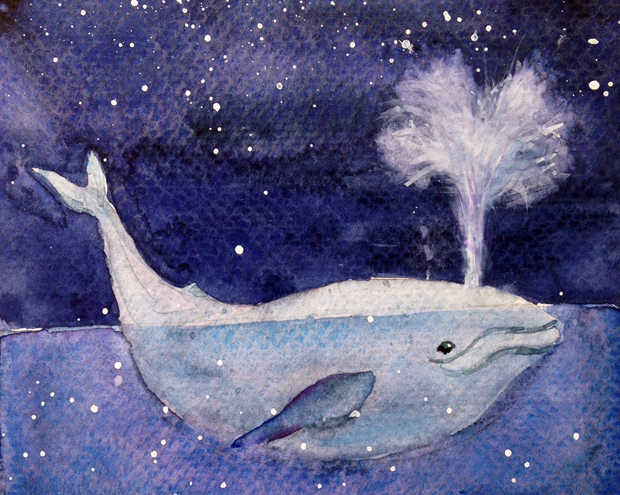In her book, Grayson, author Lynne Cox looks back to a March morning in her 17th year when she was out training in the ocean off Santa Cruz. By then she had already swum the English Channel and the Catalina Island channel. Some of her descriptions of the sea life she encounters are mesmerizing. She takes you there: the ache and tingle of the 55-degree Pacific, the glitter of phosphorescent algae in the pre-dawn darkness, the rain of 35-pound tuna leaping to feed on smaller fish, the glory of the sunrise over land.
The story wraps around her encounter with a baby grey whale, a male, 18-feet in length, who has just been separated from his mother. Cox is on her way back to shore after her long workout, looking forward to hot chocolate and a warm croissant when her friend, the bait shop owner, comes to the end of the pier to warn her. If she swims to shore, the baby whale will follow and beach himself, which would be fatal.
Thus begins the saga of their attempts to find the mother whale in all that ocean. We learn about the miracle of whale migration—they were on their way from Baja Mexico to Alaska for summer feeding and breeding. Cox is at her best when writing of her experiences trying to communicate with the baby whale, trying to keep him safe with her while they search, pondering his Otherness and feeling a deep heart connection to him.
The few memoirs I’ve read seem to follow a structure of remembering back to a specific event, supplemented with other life events and relationships that help shed light on the main one. Grayson uses this technique, mostly to good effect. A few times, I did get the feeling that she was padding it to a) stretch the story to book length, and/or b) amp up the suspense of the main story.
It’s a short enough book that I could forgive the TED-stage aphorisms like Sometimes you just have to attempt the impossible even when it seems crazy, or Negative thinking closes you off from seeing another way. These morals are offered with sincerity and were obviously hard-won, so I could let them go by without chafing too much at their near-triteness. Usually I love that self-help stuff, but in this case it frustrated my one desire: to find out what happens to the baby whale.
Spoiler alert! Against all odds and better sense, they do manage to reunite the whale with his mother. Other fishermen in the area were on the lookout and a small crowd of parents and children gathered on the end of the pier to watch. It’s a beautifully touching scene that made me cry. The mother whale clearly singles out Lynne Cox to thank her. The huge, 45-foot long animal glides around and close below the tiny human, keeping just the right distance to maintain intimacy without swamping her.
It’s a magnificent story of encountering, appreciating, and surrendering to the many mysteries of the animate earth. Cox is at her best when conveying her awe and wonder in the presence of ocean life, stars, the sunrise, a storm blowing in, even down to the dazzling array of blues in the water. Cox is open to whatever happens, gives in to an immediate sense of responsibility, determines to help however she can, and accepts her inability to understand the baby whale’s many attempts at verbal communication. She models humility beautifully by refusing to allow physical difference and limitation to become separation. Instead she gives in to her emotional connection to the place, the whale and the experience. Far more profound than any self-help mottos, this is the deepest lesson in Grayson.

